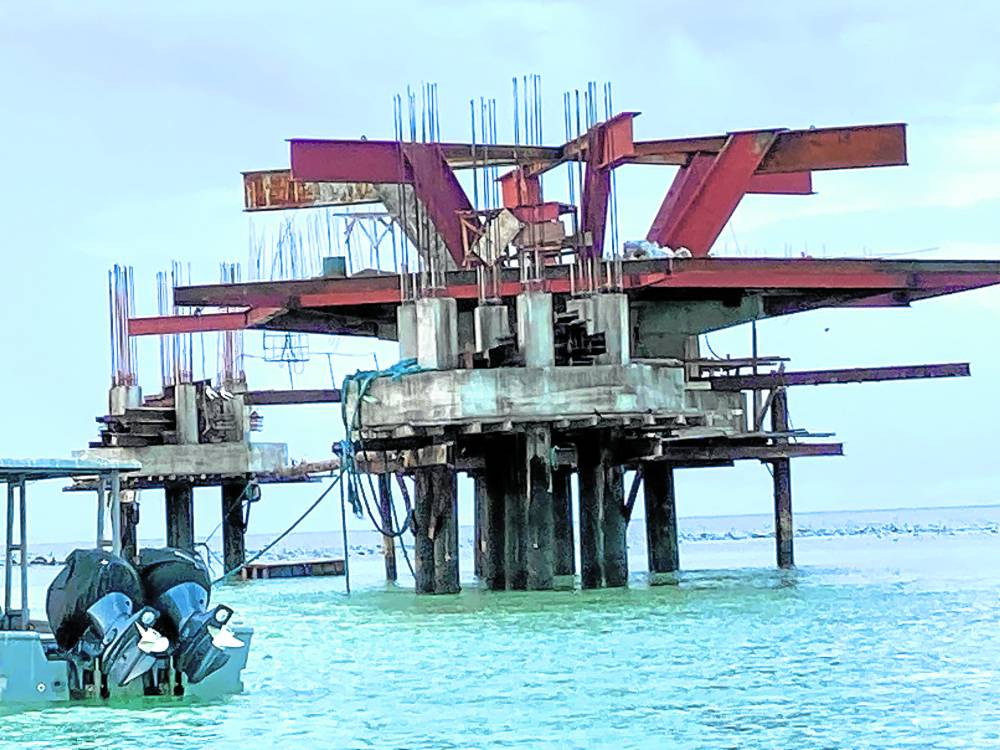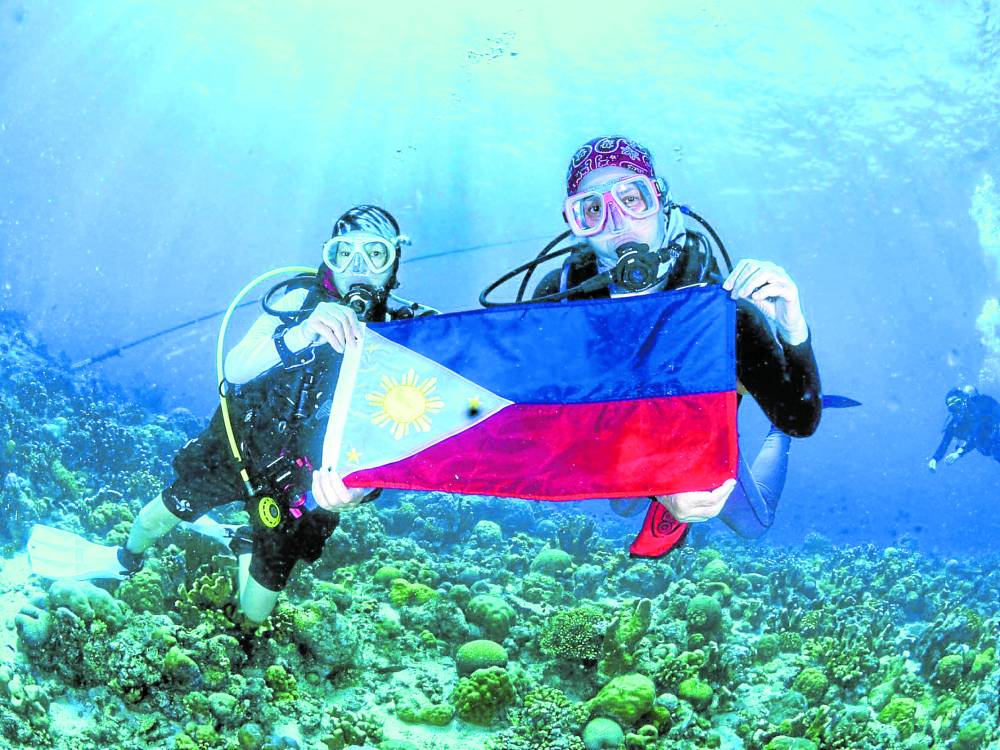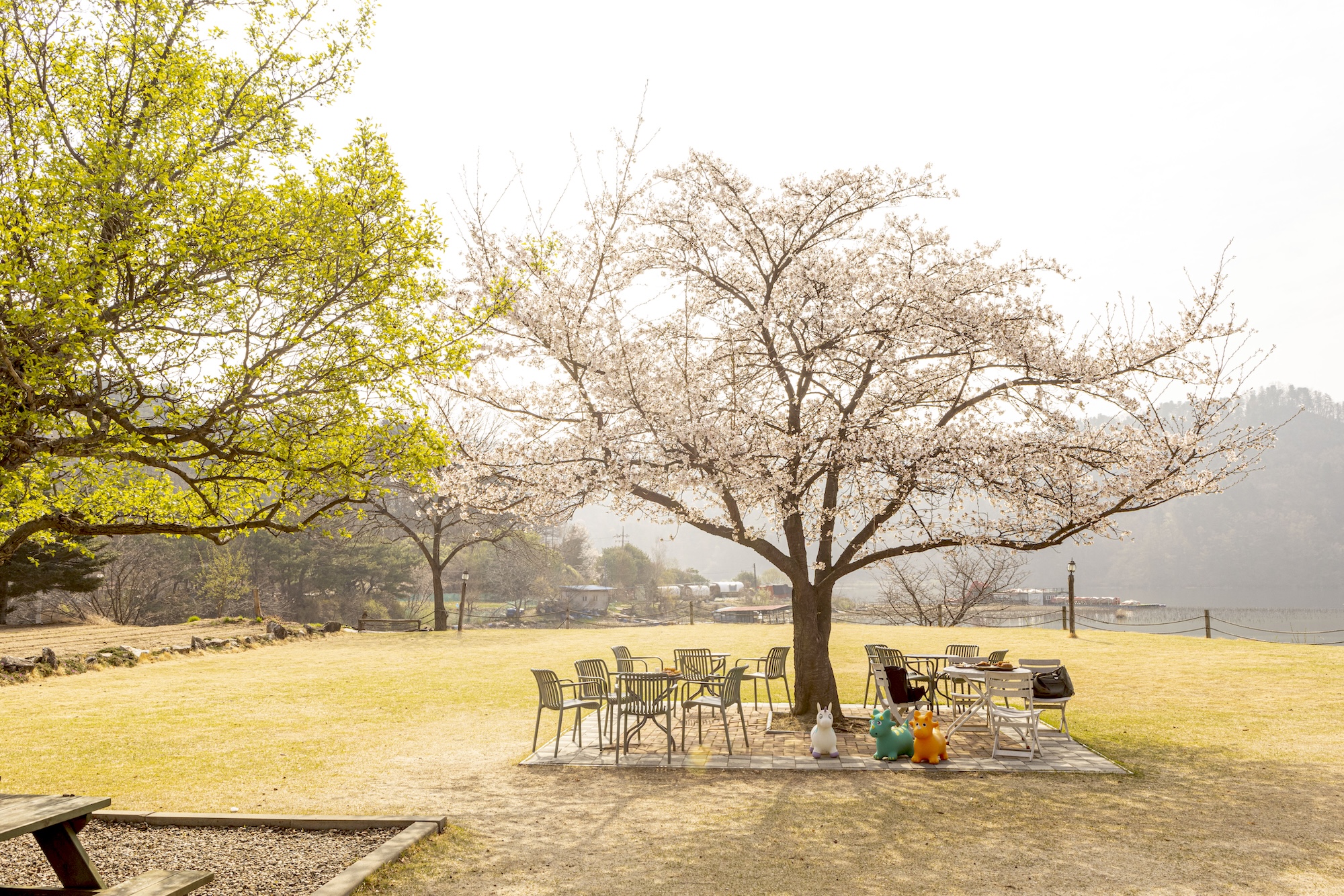
Although the marine life was still wonderful, and the amount of fish and corals still amazing, there was no mistaking it: Coral bleaching was happening in the Tubbataha Reefs Natural Park (TRNP), the Philippine marine treasure and Unesco World Heritage Site in the Sulu Sea.
The damage was not extensive, from what we saw on our dive trip to Tubbataha last June, although it was reportedly more serious in shallow areas. Expanses of tabular acropora, hard corals that provide shelter for so many fish, had bleached-out patches. Staghorn corals with sharper points, also home to marine life, had pale tips—even if resident creatures were unaware of the problem, for now.
“The fish don’t realize it,” says TRNP’s protected area superintendent Angelique Songco. “It’s really sad. On one dive, we saw lots of beautiful corals, all white. And the fish were all swimming as if nothing was happening. They hadn’t realized that they may soon be homeless.” Songco estimates the bleaching to be as minor as 3 percent in some areas, and as high as 43 percent in others.
Coral bleaching happens when zooxanthellae—the microscopic algae that live in corals in a symbiotic relationship, in turn allowing them to feed and giving them their beautiful color—are expelled when corals are stressed by environmental changes, such as rising temperature. If the water stays hot, the corals turn white, and without the zooxanthellae that provide corals with food, the corals die.

Culprit
The culprit, of course—and which you’d be foolish to still deny—is climate change. “A warming planet means a warming ocean, and a change in water temperature—as little as 2 degrees Fahrenheit—can cause coral to drive out algae,” says the Worldwide Fund for Nature website, Worldwildlife.org. “… Coral bleaching matters because once these corals die, reefs rarely come back. With few corals surviving, they struggle to reproduce, and entire reef ecosystems, on which people and wildlife depend, deteriorate.”
Thus, even as people in Philippine cities wilted in the extreme heat this last summer—in what was apparently classified as a Southeast Asian heatwave that likewise affected Brunei, Malaysia, Indonesia, and other countries, with heat indices hitting 53 degrees Centigrade in places like Zambales—other parts of the archipelago also felt the burn.
It was interesting to be on this particular Independence Day dive trip with some environmental advocates, all keenly aware of the impact of rising temperatures on this ecosystem. “I was quite worried at the beginning, and made several forays into shallower areas, but as we all saw, it’s been minimal in the deep,” notes Yvette Lee, acclaimed underwater photographer and vice president of Discovery Fleet, operator of the boat we were on, the comfy Discovery Palawan.
Naturally, such developments could affect Tubbataha’s lifeline, dive tourism. “Part of the fear, however, is that there’s more; we’re ending the Tubbataha diving season, but if the temperature remains constant, the corals will take time to recover.”
Lee recalls the worst instance of bleaching she had seen in her decades of diving, in 1998, when corals were still dying the following year. “So I’m crossing my fingers, as we’re not quite in the clear.”
Still, as always, Tubbataha did not disappoint. Even without the big stuff—I missed the whale shark and the large hammerhead, but other people, including many visitors and returning divers, spotted them—it remains scuba-diving at its finest. There were turtles, large schools of fish, even a posse of large marble rays that surprised many of us as we hovered over a drop-off. All this, as we saw the new station for the reefs’ hardworking rangers oh-so-slowly taking form. (Here’s hoping new fundraising efforts bear fruit.)

Fighting and thriving
“I was worried before coming here because I thought it was really that bad,” says Danny Ocampo, also an underwater photographer, and science and strategy and senior campaign manager for conservation group Oceana Philippines. “But it’s comforting to see that in some parts, even if there’s bleaching, there’s still a lot of coral life. You can actually see portions of the reef fighting and surviving and thriving.”
Ocampo talks about recruitment, when sources of coral larvae may actually settle on dead or dying corals and hopefully begin a new cycle of life. “Tubbataha supplies a lot of areas in the Philippines with larvae and fish fry. It’s also such a large, remote area, so it repopulates other places.”
Ocampo, who works a lot in fisheries management, can foresee far-reaching implications, however, if the bleaching worsens. “The fish eat less, the price of fish increases.” Earlier on the trip, we actually spotted a plastic soft drink bottle with Thai script on it. “We’re talking about connectivity. Whatever happens in an area like Tubbataha, even if it’s remote, actually impacts our lifestyle.”
“When you see an Instagram post, it’s one photo,” says Anna Oposa, marine conservationist and founder of the marine conservation non-government organization Save Philippine Seas (SPS), which focuses on education and community development. “But when you’re here, you see the extent of it. And you’re like, wow—but not in an amazed way.” What worries her most about coral bleaching, she says, is that “it’s not something we can easily fix. We know the solutions to global warming, but the scale that it needs and the speed at which we need to do it are very difficult. And you need global cooperation for it. We need the combined efforts of a billion people.”
SPS actually has a program called Change the Current, with the group teaching climate change education in public schools. “The good thing about the Philippines is, I’ve never met someone who doesn’t believe that climate change is happening,” she says. “What we are working on is connecting what they witness to climate change. It’s about making the connection to typhoons, bleaching, or storm surges. We have to ask, why is it getting hotter?”

Disruption
Last summer, Songco and Tubbataha’s regular marine experts found themselves snorkeling in 31-degree water. “It’s like the fish are like half-cooked, right? The fish expert with us was saying that most of the fish will go to deeper areas because of the heat. It’s also destruction, a disruption of their normal feeding habits and their life.” Songco notes that this may have something to do with the fewer shark sightings, considering that Tubbataha has large populations of them, especially white tip reef sharks.
The output may yet be potentially catastrophic for Tubbataha, “because then you’re back to zero in some places. It’s that magnitude of death; I’m imagining that in a year or two, this would all be rubble.” Still, Tubbataha will bounce back, Songco believes, recalling how bleaching in 1998 hit 95 percent in some areas. “It has happened before. It’s like the human body. When you’re healthy, your immune system is high, it’s good. You don’t get sick very easily. And so for reefs that have a lot of human pressure, they die very easily.”
At this end of the dive season, we experienced wonderfully sunny days, with the famed waters glassy and calm in this almost 94,000-ha marine park some 165 km from Puerto Princesa. Yet, there were also dives when the rain fell, the swells made it hard to get back on our dinghies, and visibility was bad from silt. Indeed, the quick turns in the weather were more evidence that this ecosystem was alive and dynamic—but also vulnerable.
“Nature is trying to tell us something,” muses Oposa. “When I was on the last dive, I was thinking, nature is really the greatest classroom that we have. It teaches us so much about how we should take care of it, and how it should take care of us.”
“Climate change is real,” Songco concludes emphatically. “It seems so far from us, and we don’t feel like we did something wrong. But it’s the billions of us who feel that way who are actually letting this happen.”












































